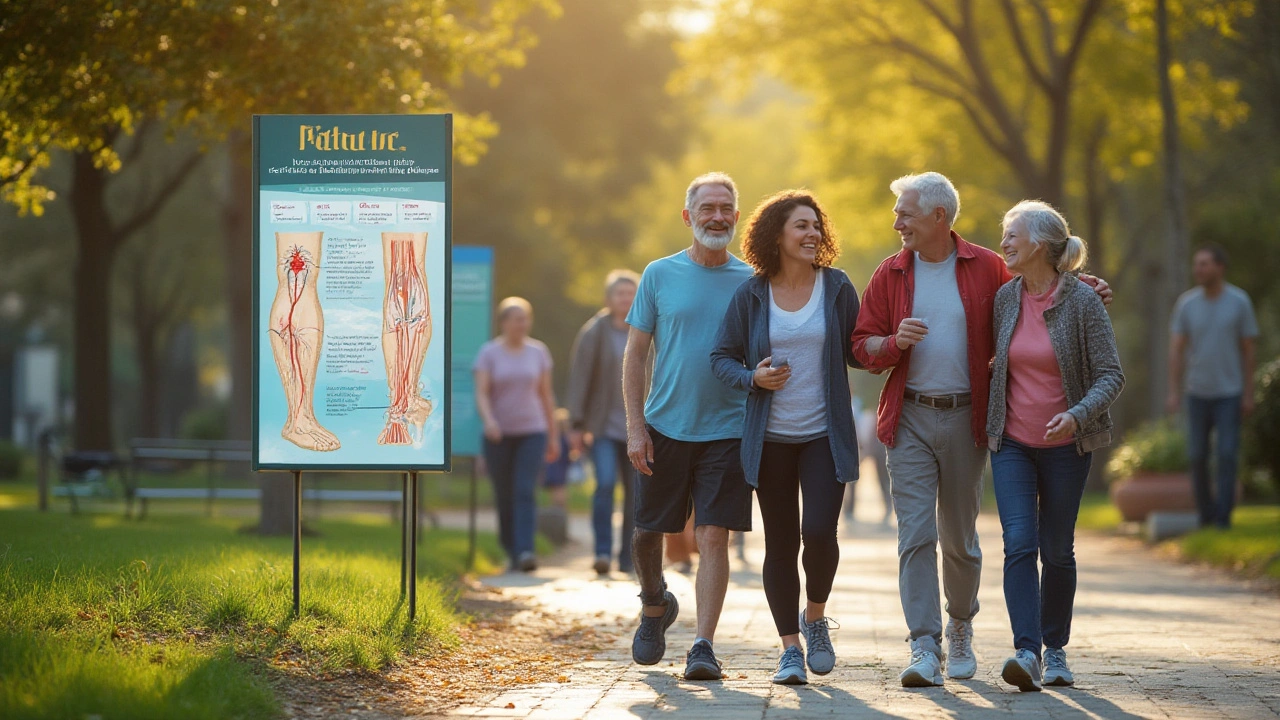Peripheral Artery Disease (PAD): What It Is and How to Manage It
If you’ve ever felt a cramp in your calf while walking, you might wonder if it’s just tired muscles or something more serious. That cramp could be a sign of peripheral artery disease, a condition where arteries in the legs get narrowed and blood flow drops. PAD isn’t rare – millions of adults have it – but many people never hear the name until symptoms get worse. The good news is that once you know the basics, you can take steps to slow it down and feel better.
What is Peripheral Artery Disease?
PAD happens when plaque builds up inside the arteries that carry blood to your legs and feet. The buildup makes the vessels stiff and narrow, so less oxygen‑rich blood reaches the muscles. Think of a garden hose that’s been pinched; the water still flows, but not as strongly. When the muscles don’t get enough oxygen, they start to hurt, especially during activity.
The condition is part of a larger group called atherosclerosis, which can also affect the heart and brain. Because the same process is at work, having PAD raises the risk of heart attack and stroke. That’s why doctors treat PAD as a warning sign to check your overall heart health.
Key Signs and When to See a Doctor
The most common warning sign is claudication – a dull ache, cramp, or heaviness in the calf, thigh, or buttock that starts when you walk and eases when you stop. It can feel like you’re walking on a flat tire. If the pain shows up quickly, it’s usually a sign that the arteries are more seriously blocked.
Other clues include:
- Cold or numb feet, especially after resting.
- Skin that looks shiny, feels tight, or changes color.
- Sores on toes or feet that heal slowly.
- Weak pulse in the foot compared to the ankle.
If any of these show up, schedule a check‑up. Your doctor can measure the ankle‑brachial index (ABI), a simple test that compares blood pressure in the ankle with that in the arm. An ABI below 0.90 usually means PAD.
Don’t wait until the pain stops you from walking a few blocks. Early detection lets you use lifestyle changes and medicines before the arteries get too clogged.
Risk Factors You Can Control
Some risk factors are out of your hands, like age and genetics, but many are lifestyle‑related:
- Smoking – the single biggest risk. Quitting can slow plaque growth fast.
- High blood pressure – pushes more force onto artery walls.
- High cholesterol – fuels plaque.
- Diabetes – damages blood vessels and nerves.
- Being overweight – adds strain to the circulatory system.
Turning these around doesn’t cure PAD overnight, but it reduces the speed at which it worsens.
How Doctors Treat PAD
Treatment usually starts with the basics:
- Exercise program – supervised walking helps muscles use oxygen more efficiently and can improve blood flow.
- Medications – antiplatelet drugs (like aspirin), cholesterol‑lowering statins, and medicines that lower blood pressure.
- Risk‑factor control – quitting smoking, eating a heart‑healthy diet, and controlling diabetes.
If symptoms stay severe, doctors may recommend procedures to open the artery. Angioplasty inflates a tiny balloon inside the blocked segment, sometimes followed by a stent to keep it open. In rare cases, a bypass surgery creates a new route for blood around the blockage.
Living with PAD – Everyday Tips
Even if you need medication or a procedure, everyday habits make a big difference. Walk a brisk 30 minutes a day, but stop before the pain becomes intense – the goal is “pain‑free” exercise. Wear loose‑fitting shoes and keep your feet clean and dry to prevent sores. Check your feet every night for cuts or redness.
Stay on top of your doctor’s appointments and any lab tests. If you notice new pain, a wound that won’t heal, or changes in skin color, call your doctor right away. Quick action can keep a small problem from turning into a major one.
Peripheral artery disease is a signal that your heart and blood vessels need extra care. By learning the signs, tackling risk factors, and following a treatment plan, you can keep moving and lower the chance of heart attacks or strokes. It starts with a simple step: talk to your doctor if you notice leg pain or cold feet. From there, you’ve already taken the first move toward better circulation and better health.
Pletal (Cilostazol): Everything You Need to Know About This PAD Medication
Explore how Pletal (cilostazol) treats peripheral artery disease, what to expect, side effects, effectiveness, and tips for safe use. Get real answers about this PAD medication.
Read more